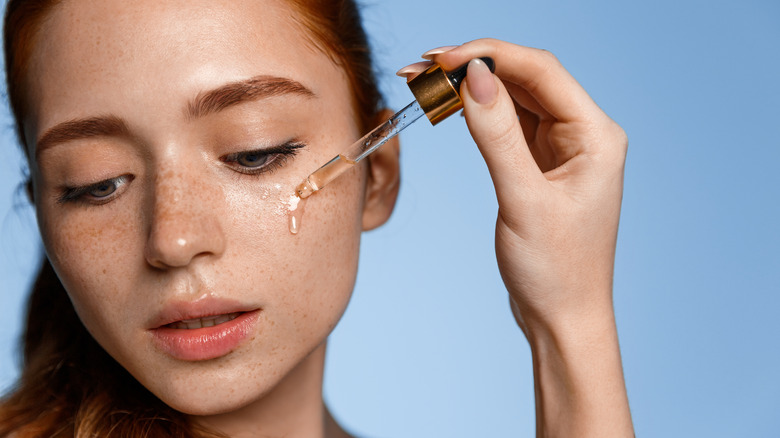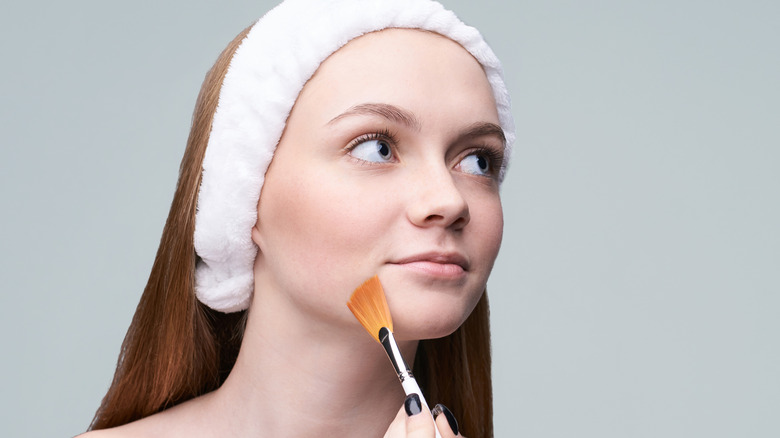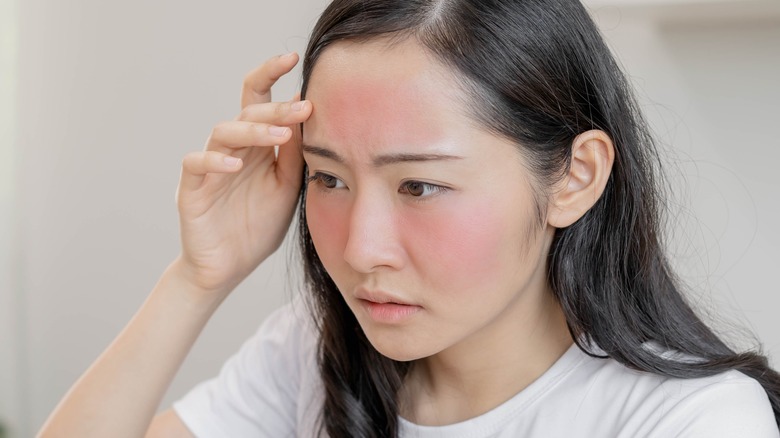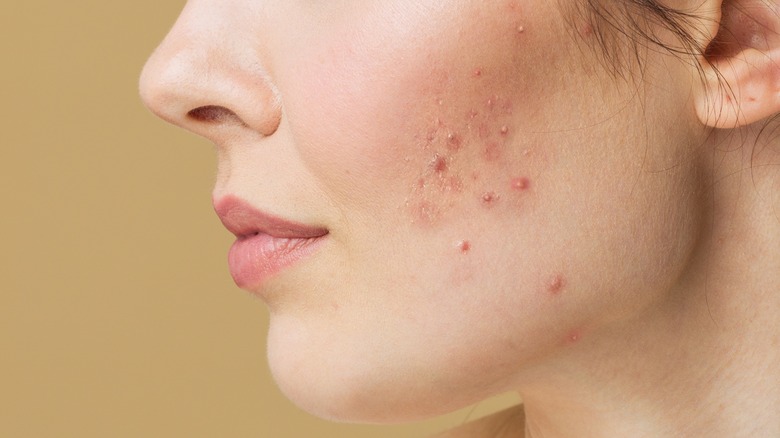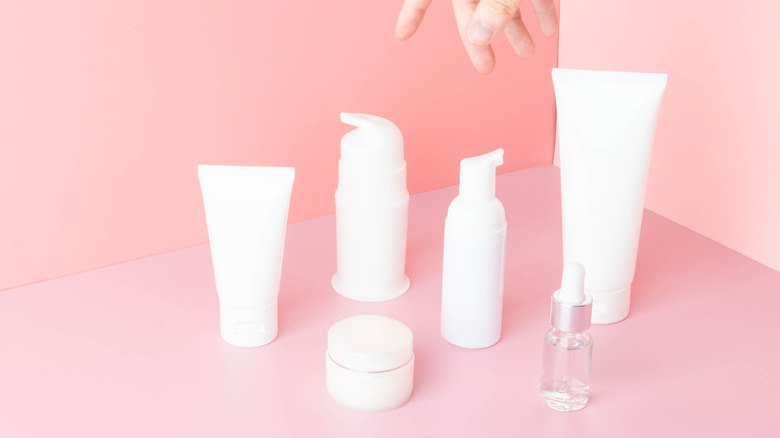Myths You Need To Stop Believing About Salicylic Acid
Salicylic acid is one of the most common treatments for acne, making it a target for many popular skincare myths. The beta hydroxy acid penetrates pores to remove and prevent excess oil, while also removing dead skin cells. It's highly effective in cleanser, serum, and spot treatment forms, though unfortunately, the myths that surround the acid make many people scared to use the "wonder acid."
Salicylic acid is FDA approved and is safe in all topical solutions that contain under 2% of the acid (via Get Healthy Skin). As long as used as directed and recommended, the effects of salicylic acid are positive. Unfortunately, many people don't know about the positive effects of salicylic acid due to years of misinformation circulating. Board-certified dermatologist Dr. Robyn Gmyrek tells Insider that "most myths were created years ago by those with limited scientific knowledge," which has ultimately led to these untruths still being spread today. Now, we took a look at some of the most common myths surrounding the use of salicylic acid and broke them down to reveal the truth about the acid that has improved the skin of millions.
Salicylic acid is the same as other exfoliants
Salicylic acid isn't just a random pick of the barrel; it truly has results that cannot be gained from all other exfoliants. Since salicylic acid is an oil-soluble beta hydroxy acid, it is capable of penetrating through the oils on the skin's surface. This is a trait that cannot be said about other acids, like glycolic or lactic acid.
Dermatologist Ellen Marmur explains to Byrdie that salicylic acid "works by increasing the amount of moisture in the skin and dissolving the substance that causes the skin cells to stick together," aka oils. Overall, salicylic acid can break down oils that other acids cannot, giving access to the pores and the ability to shed off more dead skin cells.
Salicylic acid is aggressive
When used as directed, salicylic acid is generally safe for all skin types, as it provides a non-aggressive treatment for blemishes and other skin imperfections. The only time salicylic acid may seem aggressive is if it is used on excessively dry skin, as it may dry it out much more. As with any skin product, it is always best to patch-test new salicylic acid products to ensure there is no reaction. What's more, Dr. Sandra Lee of SLMD Skincare says she uses a salicylic acid cleanser even with dry, sensitive skin but monitors her use to avoid over-drying.
Salicylic acid is only a treatment for acne
While it is common for salicylic acid to be used as a treatment for acne, it can also be a treatment for other pesky skin problems. Salicylic acid's exfoliating properties slough away dead skin cells, which is great for reducing acne, and aid in combating fine lines and dullness. Dead skin cells staying on the face can cause new, plump skin cells to shrivel, ultimately causing premature aging, per the Mayo Clinic. Salicylic acid is also FDA approved to treat dandruff, calluses, and warts.
Don't combine salicylic acid with other skincare ingredients
Salicylic acid can actually work better when combined with some other skincare products, but it is best to proceed with caution and weigh your options on a case-by-case basis. For instance, dermatologist Dr. Dendy Engleman says that it is best to avoid combining salicylic acid with other strong, exfoliating acids to prevent irritation (via Skincare.com). Still, there are some skincare products that she actually recommends using with the acid, including niacinamide, vitamin C, and hyaluronic acid.
Sunscreen isn't necessary when using salicylic acid
One of the most dangerous myths about skincare, in general, is that sunscreen isn't a necessary part of a great skincare routine. Particularly when using strong exfoliants, like salicylic acid, sunscreen is essential. The exfoliating effects will leave your skin more vulnerable to UV rays, so it is necessary to apply sunscreen before starting your day (via CeraVe). If in direct sunlight for long periods, sunscreen should be applied every two hours. Avoiding using sunscreen can cause serious burns and premature aging.
